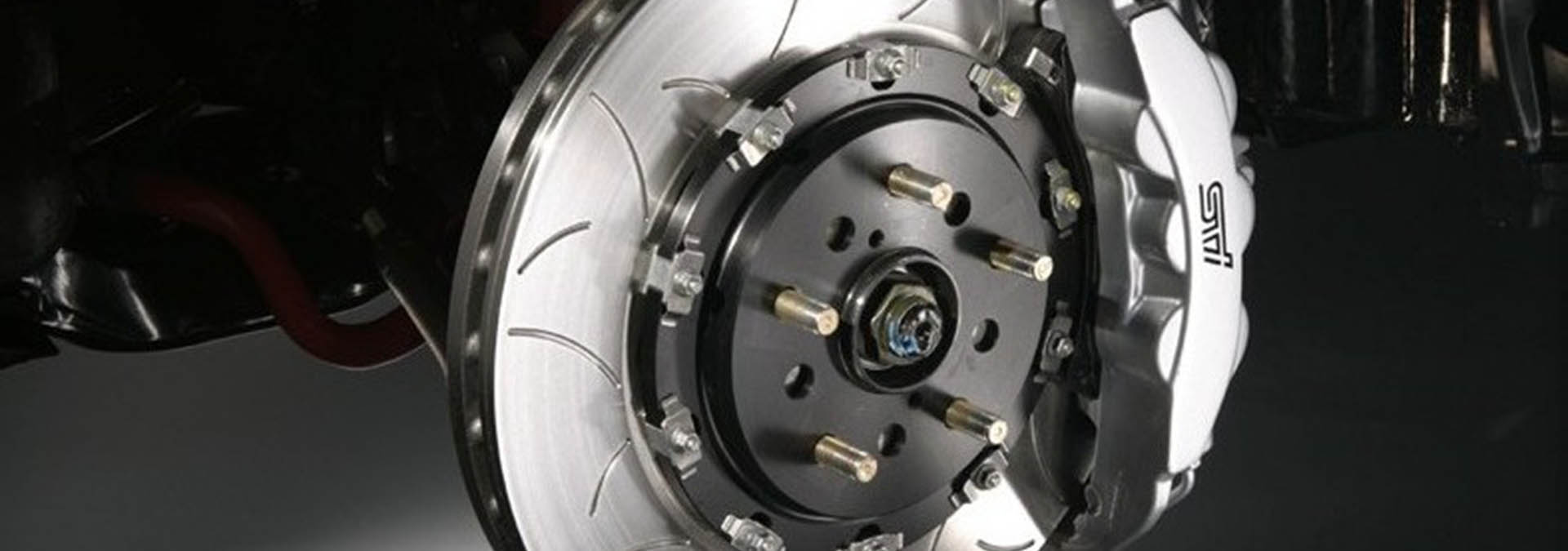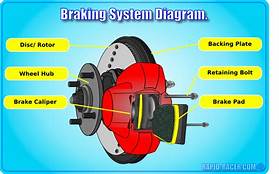

Brakes should be replaced when worn out, but how often do brakes need servicing?
It’s hard to say the proper interval between brake service. Here are some basic tests:
- Don’t take chances with brake performance. You should never wait to get your brakes checked if you think something isn’t right with your brake system.
- Understand that you can’t easily have a look yourself, because inspecting brakes means putting the vehicle on a lift, removing the wheel, and sometimes taking apart the components.
- You can’t plan on needing brake service on a set schedule, say every 20,000 or 50,000 kilometers. Brakes can wear out after 18,000 or 60,000. It depends on individual driving habits and road conditions.

HOW DISC BRAKES WORK: The brake pads are installed on both sides of the brake disc (also known as rotor). When the driver presses the brake pedal, the hydraulic pressure pushes the piston (or pistons) out of the brake caliper. As a result, the two brake pads squeeze the brake disc (rotor) between them.
To work properly, the brake pads have to be able to slide inside the brake caliper towards and away from the disc (rotor).
In a brake system with a floating caliper found in most cars the caliper itself also must be able to move on its bracket (anchor plate). In this design, the caliper moves on two slide pins.
The brakes endure a lot of heat and dust when braking, also moisture when driving in the rain or snow. As a result this can cause rust to build up and make the brake pads to stick within the bracket or the brake caliper slide pins to seize up.
Similar issues happen with the rear drum brakes: rust on the brake drums can cause squeaking, and wear some components, especially the parking brake parts may seize up due to corrosion or lack of lubrication
If there are signs that pads or caliper slide pins are not moving freely, your mechanic may recommend servicing your brakes. Servicing brakes does not involve replacing any parts.
The disc brake service includes removing the pads and calipers, cleaning and lubricating slide pins and the caliper brackets to prevent sticking or seizing. The brake discs (rotors) might also need to be cleaned from the surface rust, especially on the edges, to prevent squeaking

The rear drum brake service involves cleaning the components, including the parking brake parts and lubricating parts that need to be lubricated, as well as removing excessive rust buildup from the drums.
When you are replacing the brake pads and rotors this includes brake service, which means the brake components are also cleaned, serviced and lubricated.
WHAT’S THE BENEFIT OF SERVICING BRAKES? The benefit is that the pads will wear evenly and last longer, the caliper slide pins will not seize up, your brakes are less likely to squeak and you know your car is safe. Servicing your brakes will also lengthen the life of your brakes.

